What is Chamoy?
Chamoy is a quintessential Mexican ingredient that’s used in just about every type of dish, from frozen drinks and popsicles to candy and fruit cups. This detailed guide will help you understand chamoy, how to use it, and where to find the best brands!

What is chamoy?
Chamoy is made from a base of pickled fruits (typically mangoes, apricots, or plums), chiles, limes, and sugar. Essentially, fruit is packed into a brine solution and then separated.
The fruits are sold as snacks, known as saladitos, and the brine is mixed with limes, chiles, tamarind, Jamaica flower, and sweeteners to make chamoy. The result is a sweet, spicy, salty, and tangy recipe that can be paired with just about everything.
This condiment comes in different consistencies, from liquid and paste to powder. It serves as a vibrant dip for sliced fruits and jicama, as a candy flavoring, or as a swirly addition to chamoyadas. You can even find gummy candies coated in chamoy and chile-lime seasoning.
While there are similarities across the board, no two chamoy sauce recipes are the same. You can test out different measurements to really make it your own!
Chamoy vs Tajin
Although chamoy and Tajin are often used in recipes together, they are very different condiments. Chamoy is primarily made from pickled fruit, while Tajin is actually the brand name of Mexican chile-lime seasoning.
Tajin is used to add spice and tanginess to recipes like cantaritos, elotes, and tostilocos. The brand Tajin also sells chamoy, but their main product is chile-lime seasoning.

Flavor profile
Chamoy has a unique flavor profile that you need to taste to understand. On its own, chamoy is packed with salty, sweet, sour, spicy, and umami flavors. It may sound like it has a lot going on, but it just works!
This balance of sweet and savory ingredients gives it a chutney-like flavor and texture, so the use cases are quite similar. And if you ask me, the best way to experience chamoy is by making your own. You can experiment with fruits and mix-ins to make it your own.
Heat level
Chamoy brands and homemade recipes vary in heat intensity. Typically, the heat in chamoy comes from the type and number of chiles used. If you prefer a milder flavor, opt for brands labeled as “mild,” or make your own and reduce the number of chiles.
For those who love to feel the burn, there are “extra hot” chamoy versions available on the market. If you’re preparing your own, up the heat by adding more chiles or choosing a hotter variety (like arbol chiles).

Health benefits
While mass-produced chamoy isn’t very good for you, homemade chamoy is full of vitamins and minerals. Stone fruits typically used to make chamoy contain high levels of vitamins A, C, and potassium, which are essential for proper heart functioning.
Chiles contain a powerful compound called capsaicin, which carries anti-inflammatory and antioxidant properties. And just one lime contains over 20% of our daily vitamin C needs!
How to use chamoy
There are so many ways to use chamoy! For a simple snack, drizzle some on fruits and veggies like mangoes, apples, jicama, cucumber, and watermelon.
You can also mix it into drinks like mangonadas, margaritas, micheladas, paletas (popsicles), and raspados (shaved ice).
For a savory spin, serve it as a condiment with crispy black bean tacos, vegan quesadillas, tostilocos, chicharrones de harina, and pepinos locos.
Recipes
Here are some of my go-to recipes incorporate chamoy into:
Storing
Most store-bought chamoy can be stored in a cool, dark, and dry area for 3 months once opened. Freshly made chamoy sauce needs to be refrigerated in an airtight jar or container. It will retain its tangy-spicy flavor for about 1-2 months this way.
To prolong the shelf-life, you can freeze your chamoy. Freeze it in ice cube trays so you can thaw each cube individually as needed. This prevents thawing and refreezing the entire batch, which can lead to a loss of flavor and texture over time.
Buying guide
By now, you’re probably wondering how you can get your hands on this infamous condiment! If you don’t have time to make chamoy sauce, look at Mexican food markets or the international aisle of large grocery stores.
If you don’t have access to these stores, you can try ordering it online. Some of the more common chamoy brands include Mega, Tajin Mango, El Chilerito, Amor, and La Guacamaya. For a sugar-free, low-sodium option, try the “I Love Chamoy” brand.

Substitutions
If you’re unable to make your own or find any chamoy to buy, here are a few substitutions you can try:
- Mango chutney: This sweet-savory condiment from India has a similar fruit base with vinegar, sugar, and spices added. Mango chutney provides sweet, salty, and savory flavors, making it a suitable chamoy substitute.
- Sweet & sour sauce: Originating in China, sweet and sour sauce typically consists of fruit, vinegar, and soy sauce. You can use this as a 1:1 replacement for chamoy.
Frequently asked questions
Chamoy does not contain animal products, so it is generally suitable for vegans. Some brands contain red dye, so I recommend making your own to be safe.
Mass-produced chamoy contains high levels of sugar in the form of high-fructose corn syrup, but homemade chamoy has many health benefits from the chiles and fruit.
Most chamoy products are naturally gluten-free, as they don’t contain wheat or gluten-containing ingredients. However, if you’re on a strict gluten-free diet, look for products specifically labeled as gluten-free to avoid cross-contamination.
More Mexican ingredients
If you’re wondering what ingredients like piloncillo or Mexican oregano are and how to use them, take a peek at some of these guides:
Note: I’ve updated this post to include new information and helpful tips about the recipe.
Mitch Chapman is a food writer, photographer, and one of the founders of Broke Bank Vegan. With a background in healthcare and the restaurant industry, he has a passion for sharing healthy yet flavorful plant-based food.

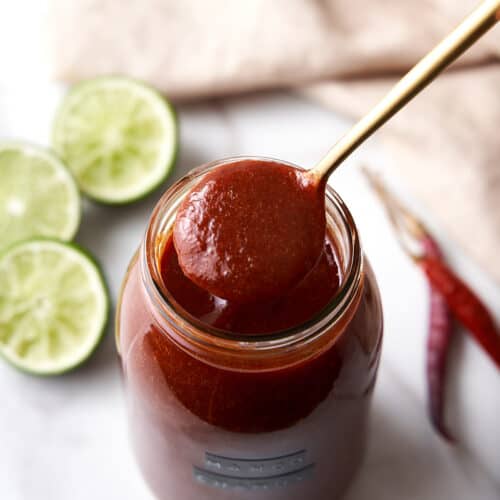
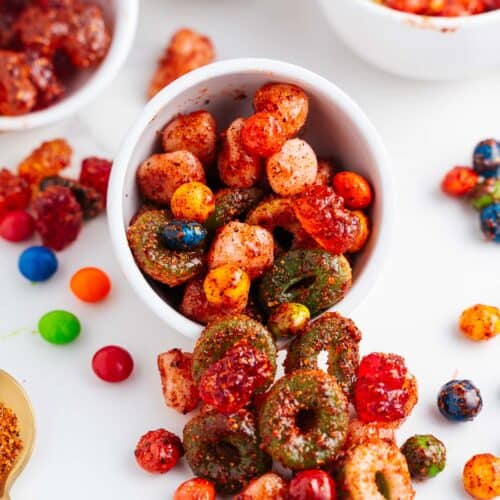

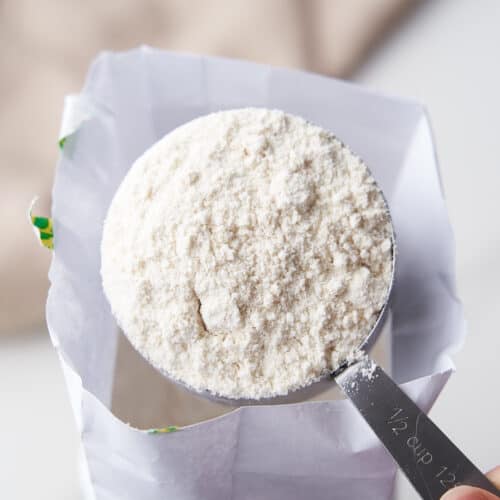

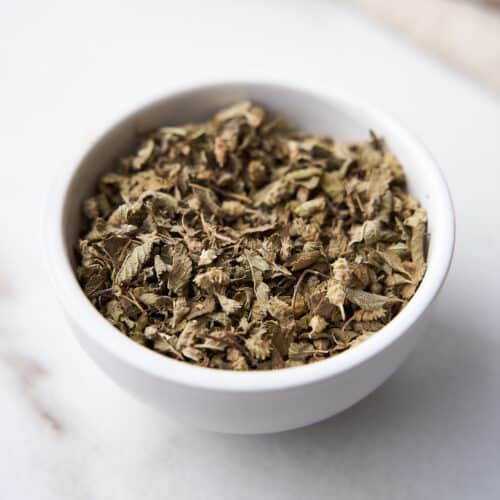

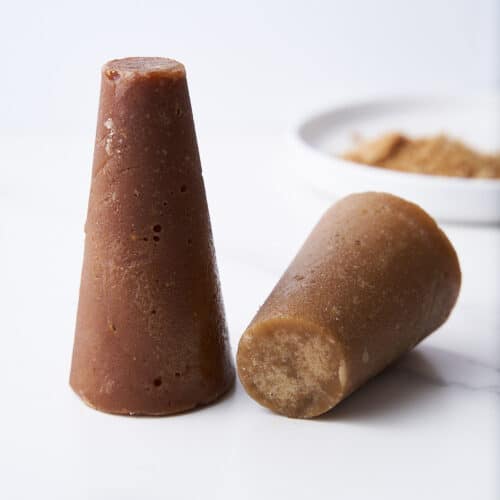
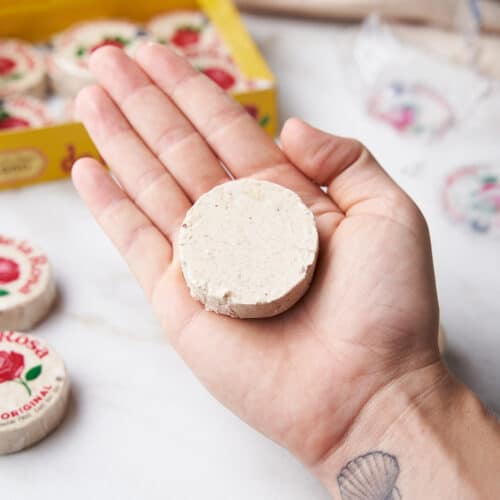
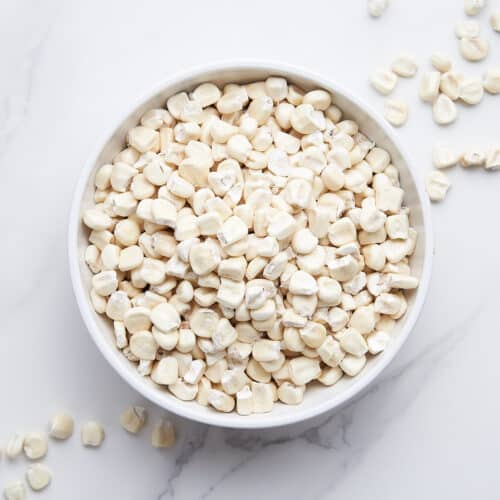


I buy sugar-free (sweetened with monk fruit), low-sodium (40% of normal, 40 mg per 1 tablespoon serving) “I Love Chamoy” made in South Texas. Online. Delicious.
Nice! That sounds awesome. We will add that to the list!
Hi, are chamoy sauces in the bottle still good after expiration date if not opened? If yes for how long? It looks runny and not thick so is it considered still good?
Hi Sammy,
It’s probably still fine, but it depends on how much past the expiration date it is. If there is any off smell or texture, it’s better to purchase a new bottle in our opinion. Hope that helps!